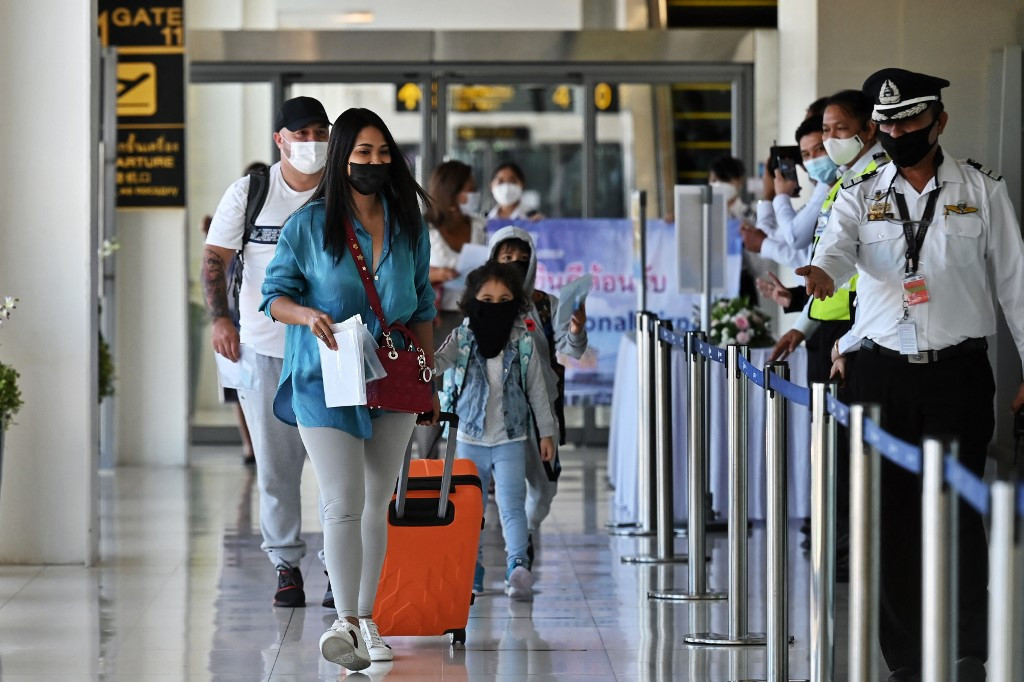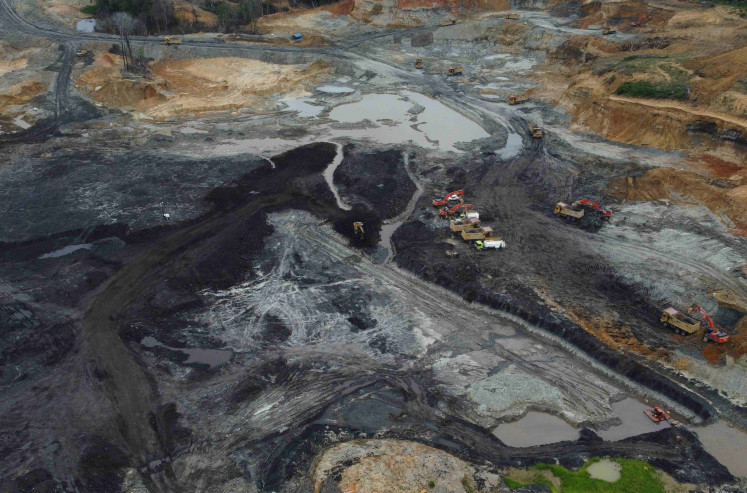Popular Reads
Top Results
Can't find what you're looking for?
View all search resultsPopular Reads
Top Results
Can't find what you're looking for?
View all search resultsSandboxes amidst a rising tide
In the past month, daily COVID-19 infections have quadrupled in Thailand, with more than 9,000 cases recorded by the second week of July.
Change text size
Gift Premium Articles
to Anyone
L
aunched on July 1, 2021, the Phuket Sandbox is an attempt by Thai authorities to restart the country’s embattled tourism industry by allowing only fully vaccinated travelers to the island. Upon arrival, travelers are to remain on the island for 14 days and should be free of COVID-19 before they are allowed to other parts of Thailand.
Similar schemes have followed, beginning with Koh Samui on July 15. Such schemes are complemented by prioritizing vaccinations for at least 70 percent of residents in each “sandbox”.
With more than 5,000 arrivals on Phuket Sandbox after two weeks, there are hopes of a possible return to pre-COVID-19 normalcy. However, the increasing disparity between the conditions in “sandboxes” and the growing COVID-19 infections in the rest of Thailand raises questions.
Have the “sandboxes” been realized at the expense of the rest of the country in terms of vaccine availability and government resources for pandemic management? Human rights activists had earlier warned how prioritizing vaccines for Phuket residents may actually contribute to an overall lack of them in other parts of the country due to supply constraints.
There are some grounds for such an assessment. In the past month, daily COVID-19 infections have quadrupled in Thailand, with more than 9,000 cases recorded by the second week of July, prompting the government to enforce new restrictions with a curfew in Bangkok from July 12. But perhaps such measures were implemented too late, as daily infections surpassed 10,000 on July 17, with a new record of 141 daily deaths.
Public confidence in the Thai government’s competency in fighting its third and deadliest outbreak is likely at an all-time low, with no end to the pandemic in sight.
Thailand has also been a laggard when it comes to vaccination rates. Beginning on Feb. 24 with the arrival of 200,000 doses of the Sinovac vaccine, progress in the vaccination campaign has been far from ideal. As of July 15, less than 15 percent of the Thai population has received at least one dose of a vaccine.
Efforts to procure other vaccines have been dismal, with only the addition of the AstraZeneca (AZ) vaccine since the first week of June 2021. There are also doubts about whether Thailand would be able to ensure sufficient supplies of the AZ vaccine.
While the British-Swedish vaccine can be produced in Thailand, only one pharmaceutical company, the royally-owned Siam Bioscience, has the rights to do so. If the government still harbors the ambition of reopening the country’s borders by mid-October 2021, this will be quite unlikely.
In addition, the poor have been particularly vulnerable as many live in overcrowded conditions. This has led to high rates of infections within urban slums, such as those found in parts of Khlong Toey, a district in central Bangkok, since May 2021.
To compound matters, the vaccination campaign has been riddled with inconsistent and confusing messages regarding the availability and kinds of vaccines to be used. On the ground, temples have reported a growing number of COVID-19 related cremations. Even Thai insurance provider Syn Mun Kong has cancelled all its COVID-19-related policies, citing how the worsening situation has made risk unmanageable.
Calibrated steps at jumpstarting the economy through “sandbox” schemes seem worthwhile. It is, however, difficult to ignore the glaring contrast between the sobering images of Bangkok’s poor and sick lining up along the streets overnight for free COVID-19 tests and images of tourists enjoying themselves within the Phuket Sandbox in social media.
This is made even more disturbing when one considers that the two outcomes, worlds apart, are orchestrated by the same government. This further begs the question as to which parts of Thai society are actually benefiting from the sandbox schemes.
And while it is perfectly reasonable to allow only fully vaccinated persons into the Phuket Sandbox, this is also jarring, given that Thai residents — be they citizens or foreigners living in Thailand — might find it quite difficult to get vaccinated due to a chaotic start.
Triggering more concerns are reports of growing infections in Phuket itself. In light of the Delta variant’s noted resistance against the Sinovac vaccine, it goes without saying that it only takes one super-spreader event to send a quarantine-free resort island into total lockdown. The same possibility also cannot be ruled out for similar “sandbox” schemes.
Even if the “sandbox scheme” proves its detractors wrong, it will still emerge as a pyrrhic victory for its advocates. In a country that relies so heavily on tourism to keep its economy and businesses going, one might convincingly argue that tourist sandboxes are a necessary start, in spite of its imperfections.
However, for others, the dogged insistence on tourist “sandboxes” in the midst of a worsening outbreak can also be perceived as another reflection of the deep socio-economic divides within the country.
Ultimately, while the “sandbox” is portrayed as a scheme to aid the recovery of the economy, the rising tide of infections and ensuing economic hardships affecting ordinary Thais reflect an alternate reality. No amount of revenue from “sandboxes” will be able to make up for the more than 2,500 COVID-19 related deaths since April 2021. This is because a government will be judged on how it protects all of its citizens in a crisis, and not merely a smaller group of persons and big businesses operating in the “sandboxes”.
Perhaps it is time to remind ourselves once more that the needs of the few should not outweigh the needs of the many.
***
Kevin S.Y. Tan is a visiting senior fellow and Kevin Zhang is a research officer at the ISEAS – Yusof Ishak Institute. The article first appeared in Fulcrum.










